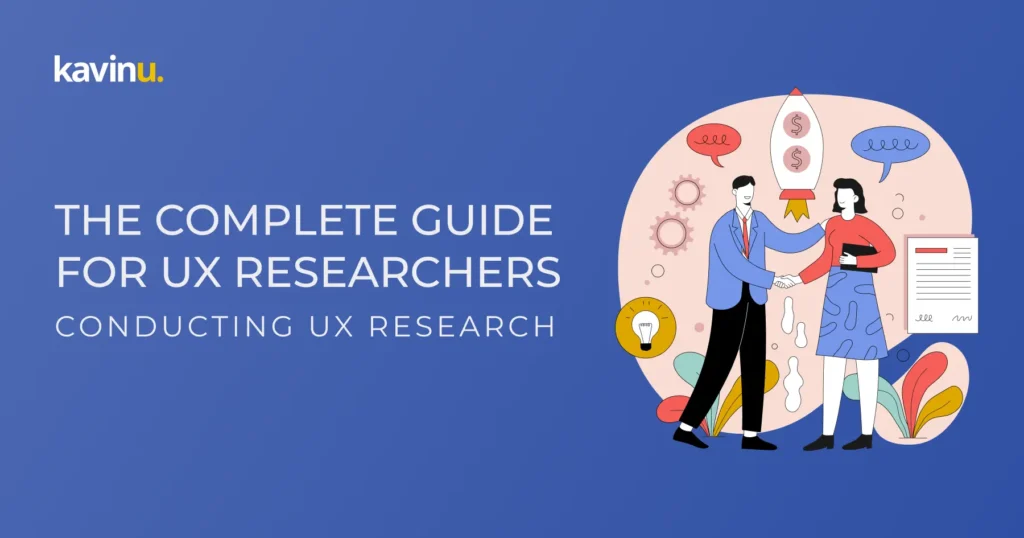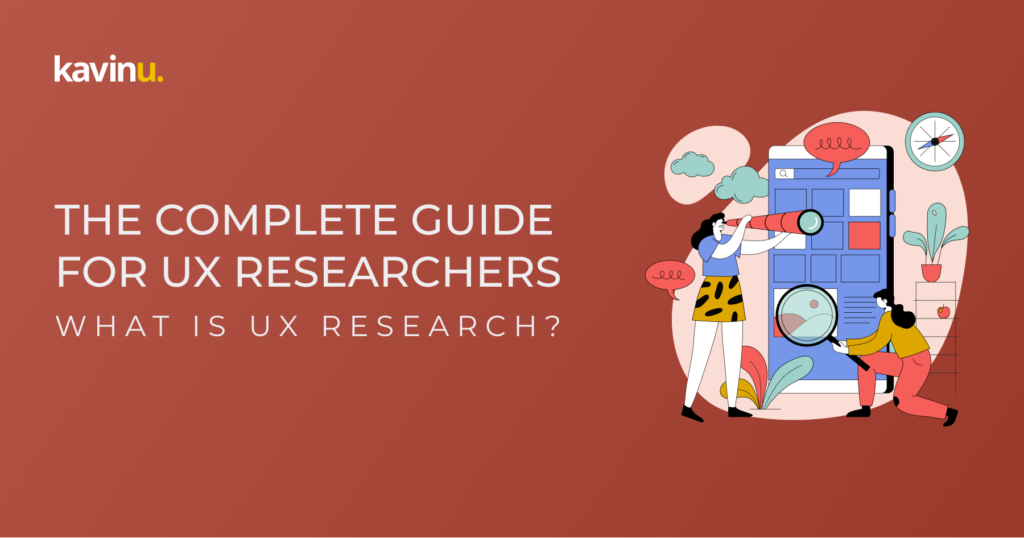Conducting UX Research The Complete Guide
What is UX Research? The Complete Guide for UX Researchers Part – II Conducting UX Research UX research is crucial for creating products that meet user needs, but it can be easy to prioritize other tasks over research. When research is only conducted in response to specific situations or problems, it’s often too late to use the insights gained to shape product design. This can result in incomplete or inadequate research, and a missed opportunity to create a product that truly meets user needs. Start with a solid user experience (UX) research process right away, instead of waiting for problems to arise. In this article, we’ll dive into the UX Research methods, and UX Research tools, and you will find a 5 step by step research process to guide your product development and design thinking and create a great customer experience. UX Research Methods To identify significant issues and design opportunities, UX researchers employ a variety of approaches and best practices. User Research methods can be classified into four stages; Discover EXPLORE TEST LISTEN Discover The discovery stage is all about shedding light on what we don’t know. What features are missing from the product? What issue(s) should our product address? What do our customers require? What information do we require to get off to a good start? “I get to discover what no one else in the company knows. I get to learn something new every day and build something to help them achieve their goals.” -Grant Baker, UX Designer at Paycom Listed below are the discovery research methods to develop new features and products, validate or eliminate assumptions, and present reliable data to the developers. Stakeholder interview Field Studies User interview Diary Studies Ethnographic Field Studies True Intent Studies Intercept Surveys Competitive Testing Explore During the exploration stage, the emphasis is on understanding the problem that needs to be solved, determining the project’s scope, and effectively addressing user needs. To achieve this, we gather information by examining the products and features offered by competitors, creating user personas to represent our target audience, crafting user stories that detail user interactions, and conducting design reviews to ensure our solution meets user needs. Several commonly utilized techniques during the exploration stage include: Design Reviews Task Analysis Journey Mapping Competitive Analysis Prototype Testing Card Sorting Persona Building Writing User Stories Test Tests and other validation methods are employed to assess the effectiveness of our designs during the development process. Below are the research methods for the testing stage: Accessibility Evaluation Tree Testing Intercept Testing A/B Testing Benchmark Testing Qualitative Usability Testing Concept Testing Listen The listening stage is a continuous process throughout the entire UX design cycle. It involves gathering data and closelymonitoring all relevant information pertaining to the product, in order to comprehend existing issues and identify any new ones. “Listening to people talk about super techie stuff that we build in such simple everyday language. Very humbling. Put things in perspective and keeps you grounded.” -Archana Vaidyanathan The following are the main methods for the listening stage: Customer Feedback Eye tracking Clickstream analysis Analytics Review Participatory design Usability bug review Search log analysis Surveys In UI/UX design projects, several methods are commonly utilized, and these techniques can be beneficial at any stage of the product’s life cycle. If you require assistance with your UX research, feel free to contact Kavinu Designs and share your current objectives with our team. Why You Need a Solid UX Research Process for Better Design? The success of UX design and product development depends on a robust UX research process, which serves as its foundation. The primary objective of UX research is to develop products that cater to user and business needs by identifying and solving real user problems. Failing to implement a strong UX research process can result in dissatisfied users, decreased conversion and customer loyalty rates, high error and churn rates, and expensive redesigns. Relying on assumptions instead of research can lead to negative outcomes for both users and the business, affecting team morale and overall objectives. 5 steps for conducting User Research “User Research is actually the way by which designer is able to step into the shoes of the user and go along his or her path feeling all the stones on the way.” -Tubik Studio, Digital Studio Define your Objectives Having clear goals is essential for successful UX research. They help you plan the process, allocate resources effectively, get stakeholder buy-in, and obtain valuable user insights. To begin, you should develop hypotheses and topics of interest related to the potential problems or opportunities you want to investigate. These can come from prior research, new ideas, or brainstorming sessions. Next, identify the key UX research questions that you want to address. These could focus on user behavior, such as why customers abandon their shopping carts, different UX design options, like which CTA performs the best, or customer goals,like which features would enhance their experience the most. After defining your UX research goals, it’s important to align them with the larger objectives and metrics of your organization. For example, how will reducing cart abandonment impact revenue and conversions? It’s also crucial to communicate the importance and goals of your UX research to key stakeholders to gain their support and ensure the research’s impact is maximized. Hypotheses After setting research objectives and discussing potential design solutions with your team, it might be tempting to skip the research phase and immediately start implementing those ideas. It’s common for designers to have initial ideas and assumptions about their product, and clients may also have hypotheses they want to be tested. UX research uses hypotheses to guide the study by predicting how users might respond to a feature, design element, or product. These predictions help researchers focus their efforts and develop appropriate research questions and testing methods. Three common types of UX research hypotheses include attitude-related, behavior-related, and feature-related hypotheses. Attitude-related hypotheses – Focus on user feelings about a product or feature. For example,
Conducting UX Research The Complete Guide Read More »

